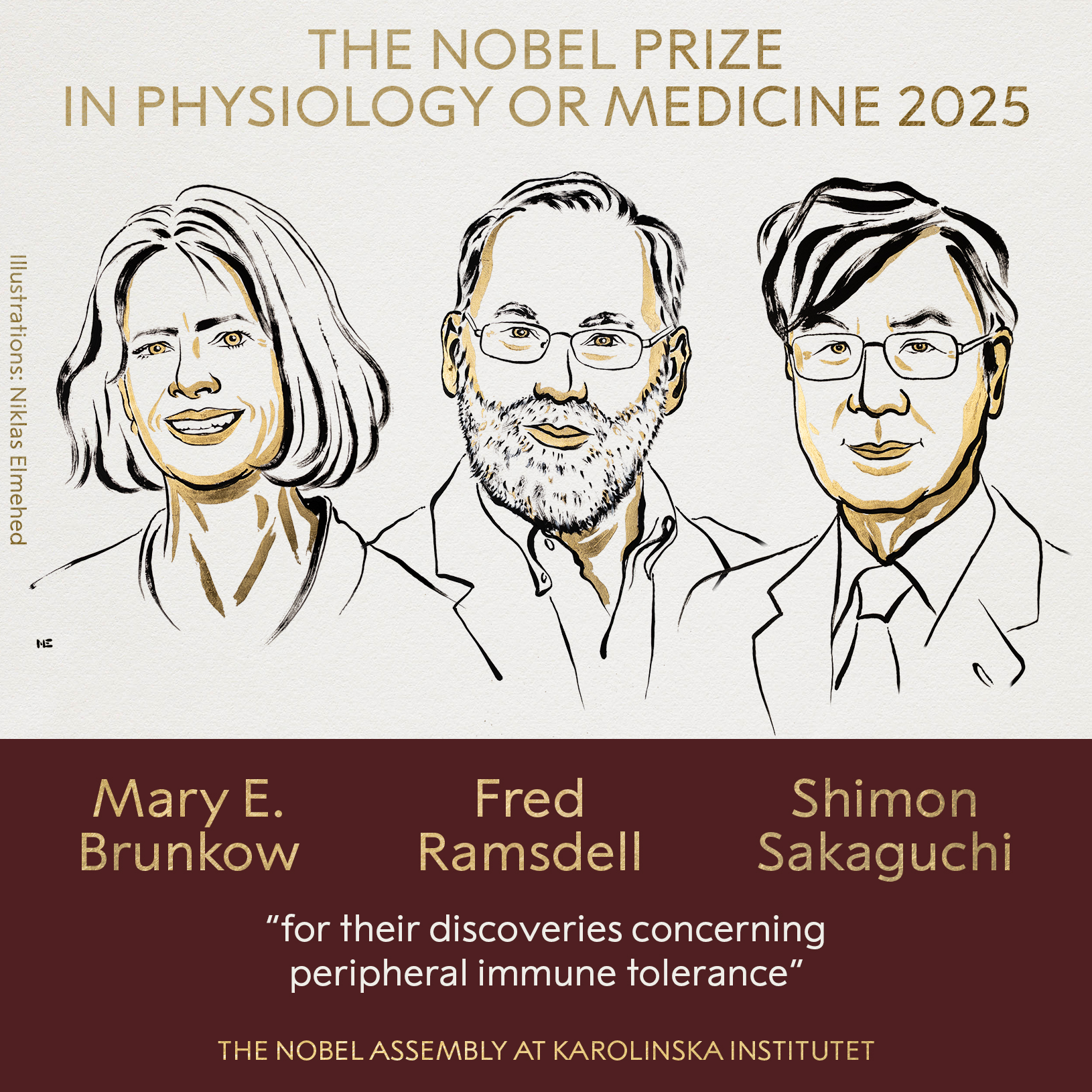Context:
On October 6, 2025, the Nobel Prize in Physiology or Medicine was awarded jointly to Shimon Sakaguchi (Japan), Fred Ramsdell (USA), and Mary E. Brunkow (USA) for their groundbreaking discoveries related to immune tolerance, specifically, the identification and function of regulatory T cells (Tregs) and the FOXP3 gene. These findings have revolutionized our understanding of autoimmune diseases, cancer, and transplant medicine.
About Peripheral Immune Tolerance:
· The immune system must differentiate self from non‑self so it can attack invaders without harming normal tissue.
· Central tolerance is the elimination or inactivation of self‑reactive immune cells during their development (in thymus for T cells, bone marrow for B cells).
· However, some self‑reactive cells escape that filter. Peripheral tolerance is the system's additional safeguards outside central organs, preventing these escaped cells from mounting harmful attacks.
· The 2025 Nobel Prize in medicine specifically honors the mechanisms that regulate this peripheral check.
The Laureates’ Contributions:
1. Regulatory T Cells (Tregs) – Shimon Sakaguchi
· In the 1990s, Sakaguchi discovered a subset of immune cells that could suppress immune responses and prevent autoimmunity.
· These cells were named regulatory T cells (Tregs).
· His experiments showed that removing these cells in mice led to autoimmune disease, proving their critical role in peripheral immune tolerance.
2. FOXP3 Gene – Mary E. Brunkow & Fred Ramsdell
· In 2001, Brunkow and Ramsdell identified the FOXP3 gene as a key regulator of Treg development and function.
· Mutations in FOXP3 were linked to IPEX syndrome, a rare but fatal autoimmune disorder in infants.
· FOXP3 is now known as the master control gene for Tregs.
Together, these discoveries explain how the immune system controls itself to avoid attacking the body, while remaining capable of defending against real threats.
Implications in Health & Disease:
· Autoimmune diseases: Many such diseases (e.g. type 1 diabetes, lupus, rheumatoid arthritis) result from failures in immune regulation. Treg / FOXP3 insights open paths to targeted therapies that restore immune balance.
· Transplantation: Enhancing immune tolerance via Tregs may reduce or eliminate the need for lifelong immunosuppression, improving graft survival and reducing side effects.
· Cancer immunotherapy: Some tumors exploit Tregs to suppress immune attack. Modulating Treg activity could help tip the balance in favor of anti-tumor immunity.
· Therapeutics & Clinical Translation: Several biotech and clinical efforts are underway to harness Tregs (e.g., adoptive Treg transfer, gene editing, small molecule regulators). News reports note over 200 ongoing human trials exploring regulatory T cell therapies.
Conclusion:
The 2025 Nobel Prize in Medicine, awarded to Brunkow, Ramsdell, and Sakaguchi for unraveling how the immune system restrains itself (i.e., peripheral immune tolerance), is a landmark in immunology. It deepens our understanding of autoimmunity, transplantation, and cancer — and opens promising therapeutic paths.







